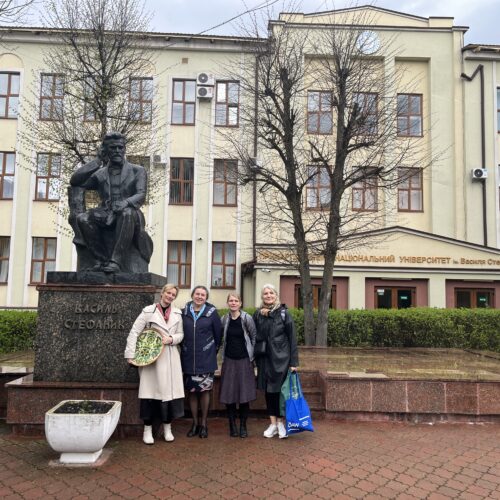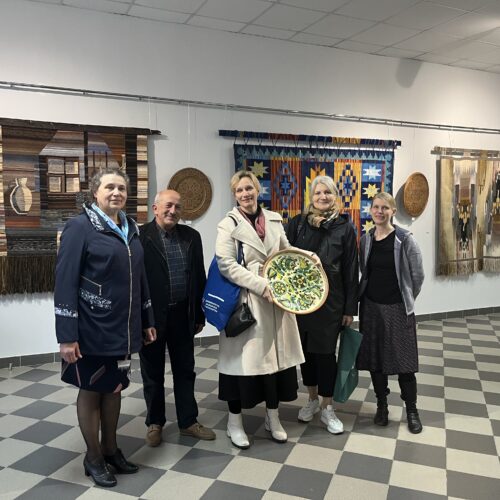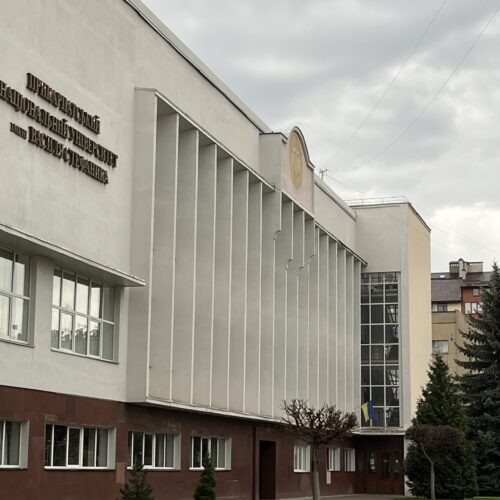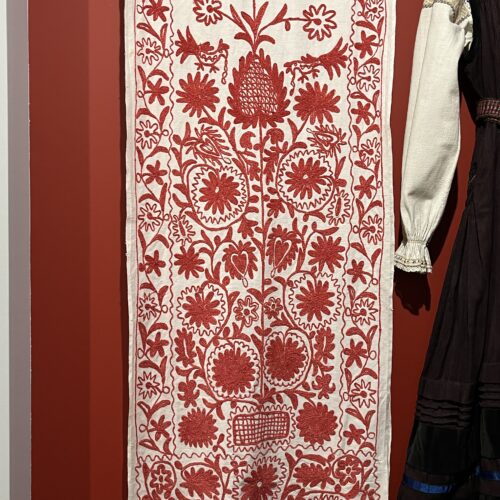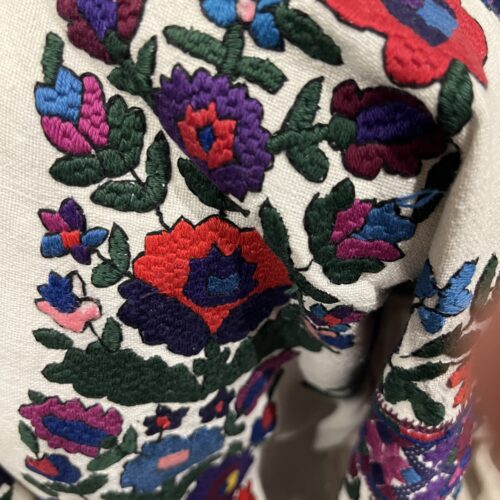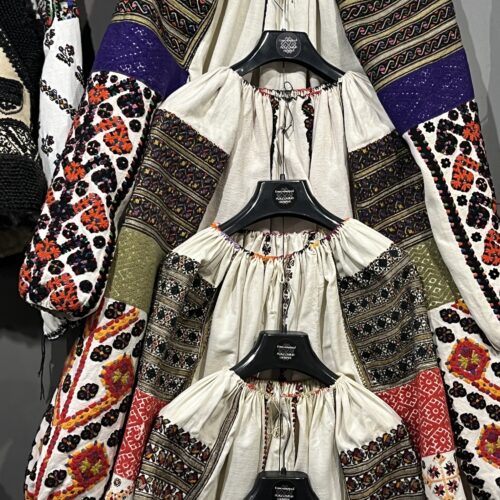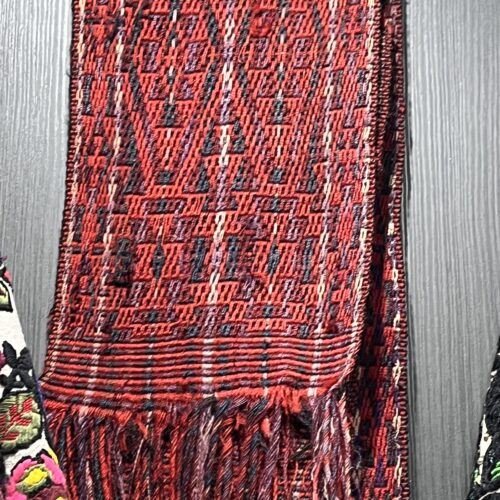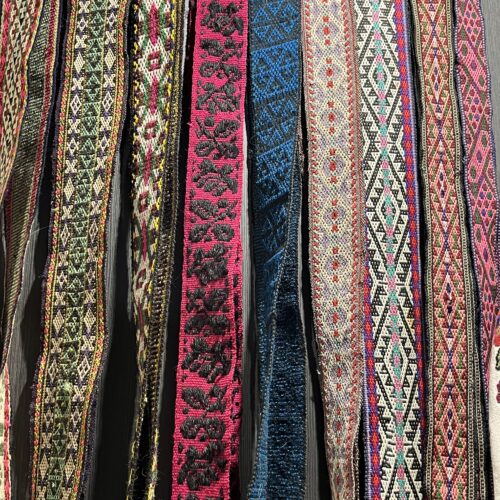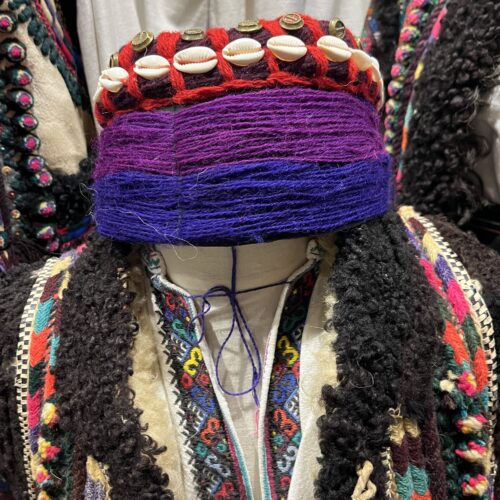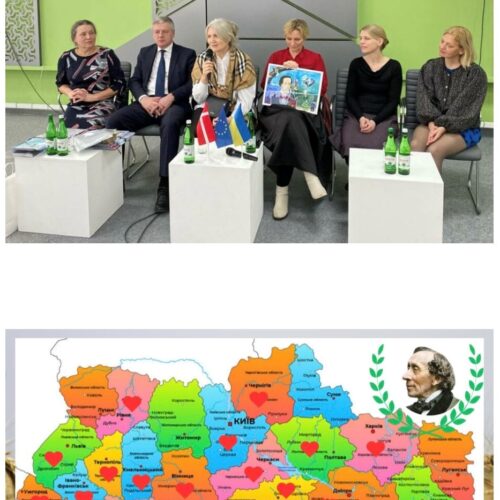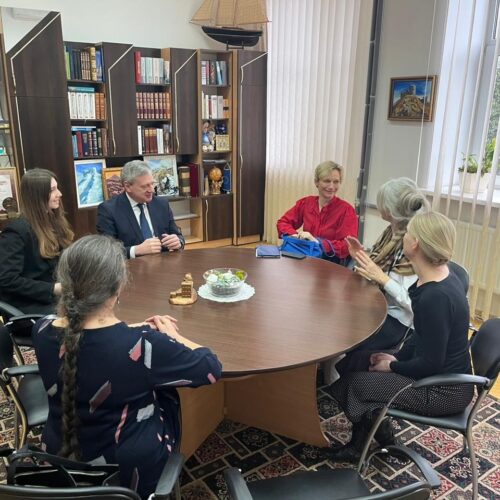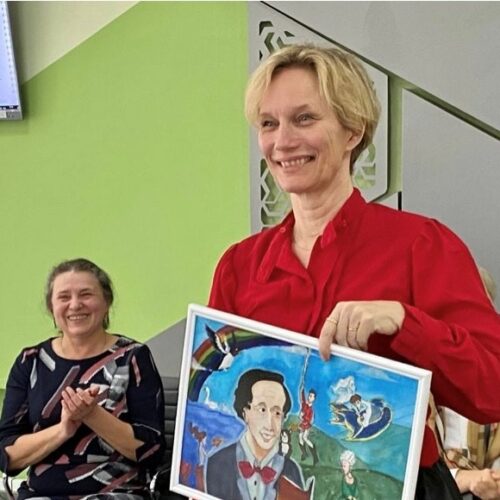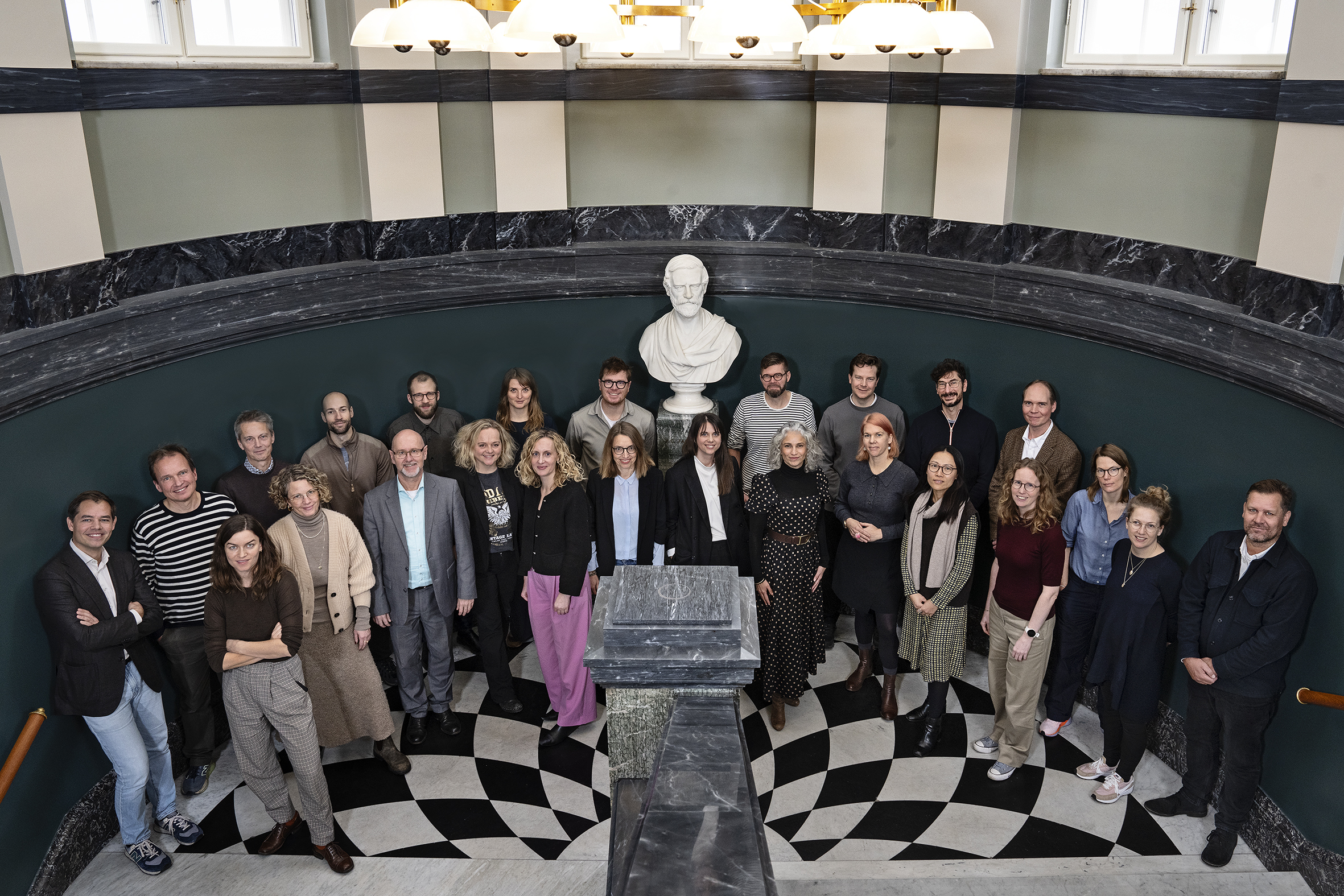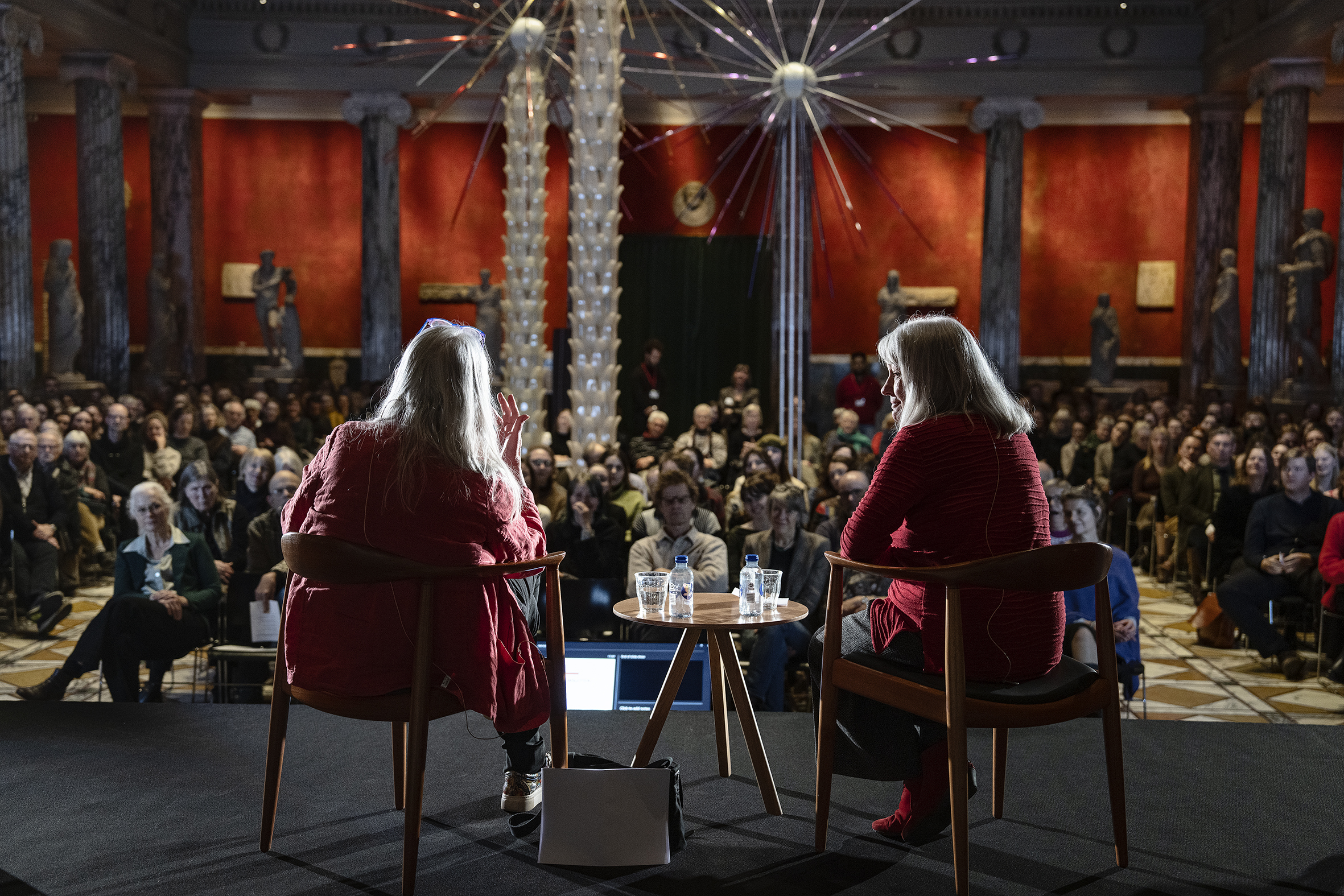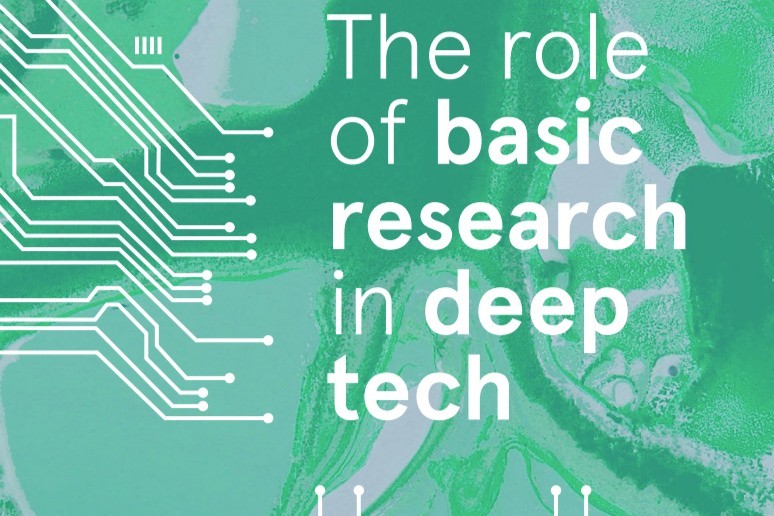Rejsedagbog fra Ukraine: Kapitel 5
H.C. Andersen-essays, fordrevne studerende og kulturarv i form af tekstiler

I begyndelsen af april rejste en delegation af fire forskere i regi af Videnskabernes Selskab til et krigsramt Ukraine, hvor de bl.a. besøgte flere af landets store universiteter. De fire forskere er tidligere præsident for Videnskabernes Selskab Marie-Louise Nosch, DUA-medlem Birgitte Pristed, Inga Kapustian og Nadiia Pavlyk. Mød dem her, i 5. kapitel af en miniserie og dagbog over deres rejse.
Fotos: medmindre andet nævnes, er fotos taget af de delegerede.
I dette kapitel skal vi bl.a. høre om en konkurrence i H.C. Andersen-essays med 152 deltagende studerende. Vi skal også høre om fordrevne forskere og studerende samt om kulturarv i form af tekstiler.
Kapitlet er det sidste i rækken af delkapitler fra rejsedagbogen, som er udkommet hver uge i maj.
*Teksten i serien er forfattet på engelsk og er skrevet af forskerne selv.
Hans Christian Andersen in Ivano Frakivsk
At the National Vasyl Stefanyk Prykarpattja University in the industrial city of Ivano Frankivsk, our colleagues Professor Alla Martynets and Associate Professor Danylo Reha welcomed us. Every year, their Department of Literature organizes an essay competition for children and young people inspired by H. C. Andersen. This year’s essay competition, titled “Andersen Unites Hearts,” was held on April 6th and co-organized by Associate Professor Alla Martynets and Inga Kapustian. With 152 students participating from 17 regions of Ukraine, the event provided a unique opportunity for reflection and understanding of Andersen’s legacy among Ukrainian readers. This type of cultural exchange event not only fosters a deeper appreciation for Danish literature but also strengthens educational and cultural ties between Ukraine and Denmark.
At the award ceremony, Inga Kapustian talked about Ukrainian translations of Hans Christian Andersen’s fairy tales through the ideological filter of the Soviet era, which has cleansed them of Christianity and reference to death, and about the necessity of new translations from Danish into Ukrainian; Marie Louise Nosch presented her favorite fairy tale The Flax, “Lon” in Ukrainian, which perhaps today reminds us of recycling and sustainability but also hope and ambition. Then some of the children and young people read their essays to the audience: A little girl about having Hans Christian Andersen as a secret friend who tells stories; a teenager from Kramatorsk, now displaced in Dnipro, appeared on the screen and presented her essay on the Snow Queen, death, evil in a mirror that we hold up in front of ourselves.
[See photos below, ed.]
Displaced students, scholars and universities
Rector of the National Vasyl Stefanyk Prykarpattja University, professor Igor Tsependa, himself educated in history and political science and a former diplomat, says that the university has approx. 18,000 students, but the number is uncertain: Some have been conscripted into the army, an unknown number have fallen in war; many Ukrainian students attend classes from neighboring countries; eastern Ukrainian students have fled here; moreover, the National Vasyl Stefanyk Prykarpattja University has welcomed and now hosts the displaced East Ukrainian universities of Lugansk and Kherson, including their students and researchers.
[See photos below, ed.]
The cultural textile heritage
Wherever you go in Ukraine, you will see how young and old wear traditional embroideries, on clothing or incorporated in designs. TheVychyvanka is worn by men, women and children on festive events, but museums and costume collections show that the textile cultural heritage is much richer, more colorful and more creative than this shirt: weavings, various embroidery techniques, band weaving or tablet weave, adornments with feathers, yarns and the mollusk money cowrie (Monetaria moneta) used as shell money or decoration on costumes.
[See photos below, ed.]
Final thoughts
“You are the first international colleagues in more than two years,” a Ukrainian education manager exclaims when she sees us. Another says “in the past, research colleagues regularly came from abroad – now only delegations from ministries come to Ukraine, we miss international researchers and students.”
This shows that science and research-based education are not high enough on the agenda in the international focus on aid and reconstruction of Ukraine. If just 1 % of Ukraine’s aid was earmarked for universities and science, Ukraine would be better equipped in the future and for EU membership. The birth rate is very low, and many young people are killed or have fled abroad, so the future small generations must become even better educated than before.
[See photos below, ed.]
